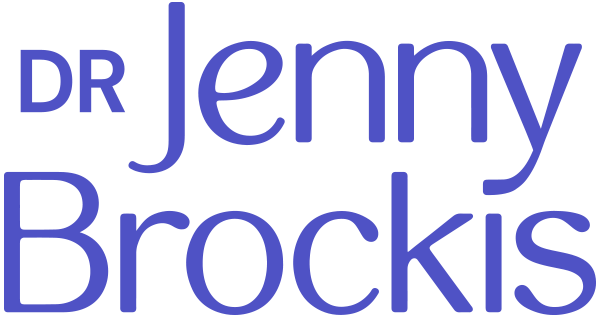
It takes just 1/5th of a second.
That’s all the time your brain needs to allow you to fall hopelessly head over heels in love.
Love. We love to be in love, we love the way it makes us feel and naturally it’s a feeling we want to last forever.
What is love?
For all of you that love Christmas, the Tooth Fairy and the Easter Bunny you may not want to read the next couple of sentences. I suggest you jump down now to the next paragraph.
Cupid got it wrong. The arrow of love is ways off target by aiming for the heart; it is our brain that determines who we fall in love with, by releasing a torrent of feel-good neurochemicals including dopamine, noradrenaline, and norepinephrine, while at the same time reducing our serotonin levels. Dopamine is the chemical that forms part of the brain’s reward circuitry, and makes us feel so good. Our brain loves that dopamine rush and like rats trained to press levers for food, will do almost anything to experience that feeling again. The other two chemicals associated with the stress response, cause us to notice that racing of the pulse, your pupils to dilate and your breath to become shallower and that slight giddy feeling. Like dopamine, we often seek out the headiness of adrenaline, which is why some of us like to go skydiving, white water rafting, or bungy jumping. Note, not everyone needs quite that level of thrill. Some find the prospect of going to the theatre or the movies, quite excitement enough. We are all different.
In addition, having sex or enjoying that physical touch with someone we love, triggers the release of oxytocin from our hypothalamus and makes us feel calm and safe. Above all else our brain’s primary function is to keep us safe. So the brain seeks oxytocin because we like to feel safe and secure.
Do we need love?
Do we need love just to find the right mate to spend our lives with and make babies? Is it inherently useful for us as a species, or is love overrated and something that just distracts us from other more useful thinking?
Where or what is love?
On fMRI scans, the areas of the brain that light up when we fall in love include the insula and the striatum and are the same areas that are activated by drug addiction and obsessive-compulsive disorder. Ooh er!
Why the connection? Because love is a habit that occurs as the result of physical desire being rewarded and we know that when the brain’s reward circuitry is triggered leading to that lovely dopamine release, it wants us to enjoy that experience again and again and again.
What does love do to your brain?
It’s often not hard to notice when someone has fallen in love. They get a bit dreamy, if not totally preoccupied and lack focus. That’s because in the early stages of love, the physical attraction and lust causes us to think about that one person all the time, we dream about them, we idealise them. We see only their attributes and dismiss those other habits that others could find off-putting or annoying. Hence the notion love really is blind, or at least wearing rose-coloured glasses. Love can however become a bit of an obsession, and that’s because along with that lovely swish of increased dopamine, your serotonin levels drop off. Serotonin is a mood regulator. Low levels are associated with depression and obsessive-compulsive disorder
But eventually, the initial phase then passes into a more stable phase of love and attachment. This is when our relationships settle into a feeling more of ongoing contentment and wellbeing. The love comes of age and matures into a longstanding partnership. Our brain has become more tolerant and used to the heady pleasures that the first flush of love brings. We start to acknowledge and accept (mostly!) those traits, quirks and peculiarities of our significant “other” as being part of them. Which is why if we don’t realize that this is the normal progression of relationships, some of us start to question whether our love has gone or dimmed. Some, believing that love can only be associated with the intensity of the combination of lust and physical desire will choose to seek out a new relationship, to regain those pleasurable feelings all over again. Here we see the person who hops from one relationship to the next in their continuing search supposedly for Mr. or Mrs. Right, though really it is just feeding their addiction, as sung by Robert Palmer in his hit single “Addicted to Love”.
Your lights are on, but you’re not home
Your mind is not your own
Your heart sweats, your body shakes
Another kiss is what it takes
You can’t sleep, you can’t eat
There’s no doubt, you’re in deep
Your throat is tight, you can’t breathe
Another kiss is all you need
Love Hurts.
There was another song I used to sing along to, written by Boudleaux Bryant (now there’s a name to fall in love with) that tells of the pain love can bring.
Love hurts, love scars, love wounds and mars
Any heart not tough, not strong enough
To take a lot of pain, take a lot of pain
Love is like a cloud, holds a lot of rain
Love hurts, ooh, love hurts
I’m young, I know but even so
I know a thing or two, I’ve learned from you
I’ve really learned a lot, really learned a lot
Love is like a stove, burns you when it’s hot
Love hurts, love hurts.
Unrequited love or the end of a relationship causes us pain. We speak of a broken heart, hurt feelings, even feeling gutted. The symptoms are painful, really painful. What we know from social cognitive neuroscience is how social pain and physical pain share common neural pathways, so no wonder it hurts so much. We frequently fail to acknowledge that much of our social pain has a strong physical element to it, that won’t go away by simply being told, “to get over it”. Conversely we ascribe a lot of physicality to our physical pain, whereas in reality we can diminish our pain using our mind. Interesting creatures aren’t we?
And while we may feel sad, rejected and horrible from lost love, scientists have revealed we can ease the pain by taking – yes that’s right, a painkiller. Studies have shown how taking Tylenol really does diminish social pain (to some extent). This is however, not to belittle the real pain we feel with loss.
Conversely when we are in the first flush of love, our tolerance to pain is hugely elevated by activating a very old area of the brain called the nucleus accumbens, in the same way as illicit drugs such as cocaine does. It basically instructs the brain to keep doing this (i.e. be in love) because it is so rewarding. Being one-eyed means we are less distracted by other variables in our immediate environment such as physical discomfort or pain.
Toxic relationships not only stultify love, they destroy self-esteem and wellbeing. Have you ever witnessed its effects?
- Sometimes we see a friend or a colleague repeatedly choosing the “wrong” partner whom we see following the same pattern of belittlement, bullying and abuse.
- Sometimes we recognise that our friends we are associated with, are toxic, promoting negativity and pessimism.
- Sometimes we witness toxic relationships at work that result in ill health and despair.
While “love is the drug” that promotes us to pursue the dopamine, noradrenaline, low serotonin cocktail, if we have the wrong mixture, our addictive brain can lead us down a dark alleyway. Knowing when to let go of addictive toxic relationships is as important as knowing how to propagate healthy ones.
Love, life and work.
Being in a loving relationship promotes our health, well-being, even our longevity. Having a partner or significant other whom we can turn to when times are tough or to share our joys life can bring, helps us to cope better and to learn more from our experiences.
A happy home environment means we are more likely to experience more positive relationships in other areas of our lives, including the workplace.
We are inherently social creatures and it has been our ability to form relationships to others that has contributed to our success, not only to procreate and ensure our continued existence, but also to develop essential collaborative skills of sharing knowledge, ideas and understanding.
If we can become more aware of all our relationships, what contributes to their success or demise, then we are developing our capacity to broaden our social networks, communicate more effectively with one another and work better with others.
All of our personal interactions with others, whether with the person we love, our neighbours, our family, friends and work colleagues depend on our social intelligence to provide us the tools to build relationships that are meaningful and helpful to us as individuals and to the collective.
Barbara Fredrickson, author of “Positivity” states “Love is the investment in the well-being of the other for his or her own sake.”
She sees love as “a single act performed by two brains.” I like that perspective.
What do you think?
Is love a feature you recognise as being important for all your relationships?
Refs:
Loyola University Health System. “Cupid’s Arrow May Cause More Than Just Sparks To Fly This Valentine’s Day.” ScienceDaily. ScienceDaily, 14 February 2009. <www.sciencedaily.com/releases/2009/02/090214104322.htm>.
StephanieCacioppo,FrancescoBianchi-Demicheli,ChrisFrum,JamesG.Pfaus, James W. Lewis. The Common Neural Bases Between Sexual Desire and Love: A Multilevel Kernel Density fMRI Analysis. The Journal of Sexual Medicine, 2012; 9 (4): 1048 DOI: 10.1111/j.1743-6109.2012.02651.x
Jarred Younger, Arthur Aron, Sara Parke, Neil Chatterjee, Sean Mackey. Viewing Pictures of a Romantic Partner Reduces Experimental Pain: Involvement of Neural Reward Systems. PLoS ONE, 2010; DOI: 10.1371/journal.pone.0013309
StephanieOrtigue,FrancescoBianchi-Demicheli,NisaPatel,ChrisFrum,James W. Lewis. Neuroimaging of Love: fMRI Meta-Analysis Evidence toward New Perspectives in Sexual Medicine. The Journal of Sexual Medicine, 2010; DOI: 10.1111/j.1743-6109.2010.01999.x

